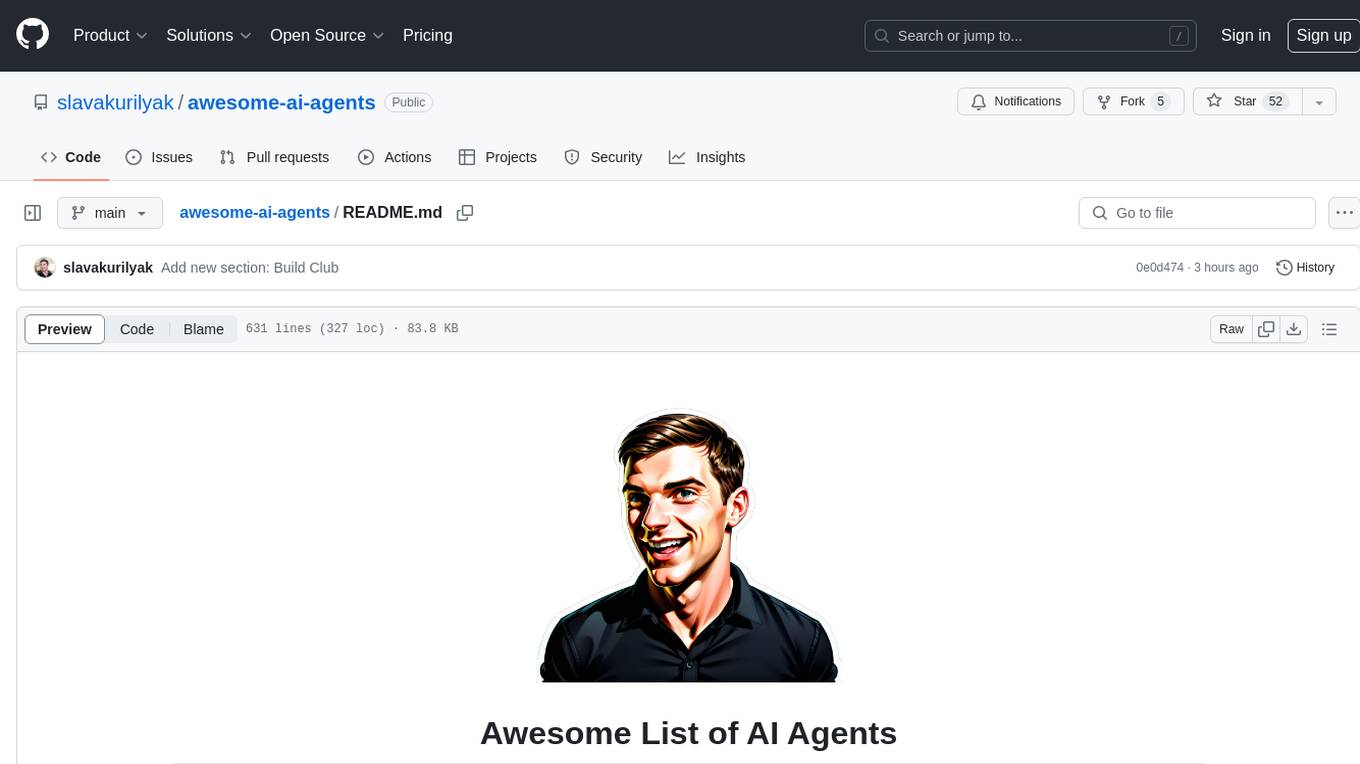
BestBlogs
bestblogs.dev - 汇集顶级编程、人工智能、产品、科技文章,大语言模型摘要评分辅助阅读,探索编程和技术未来
Stars: 707
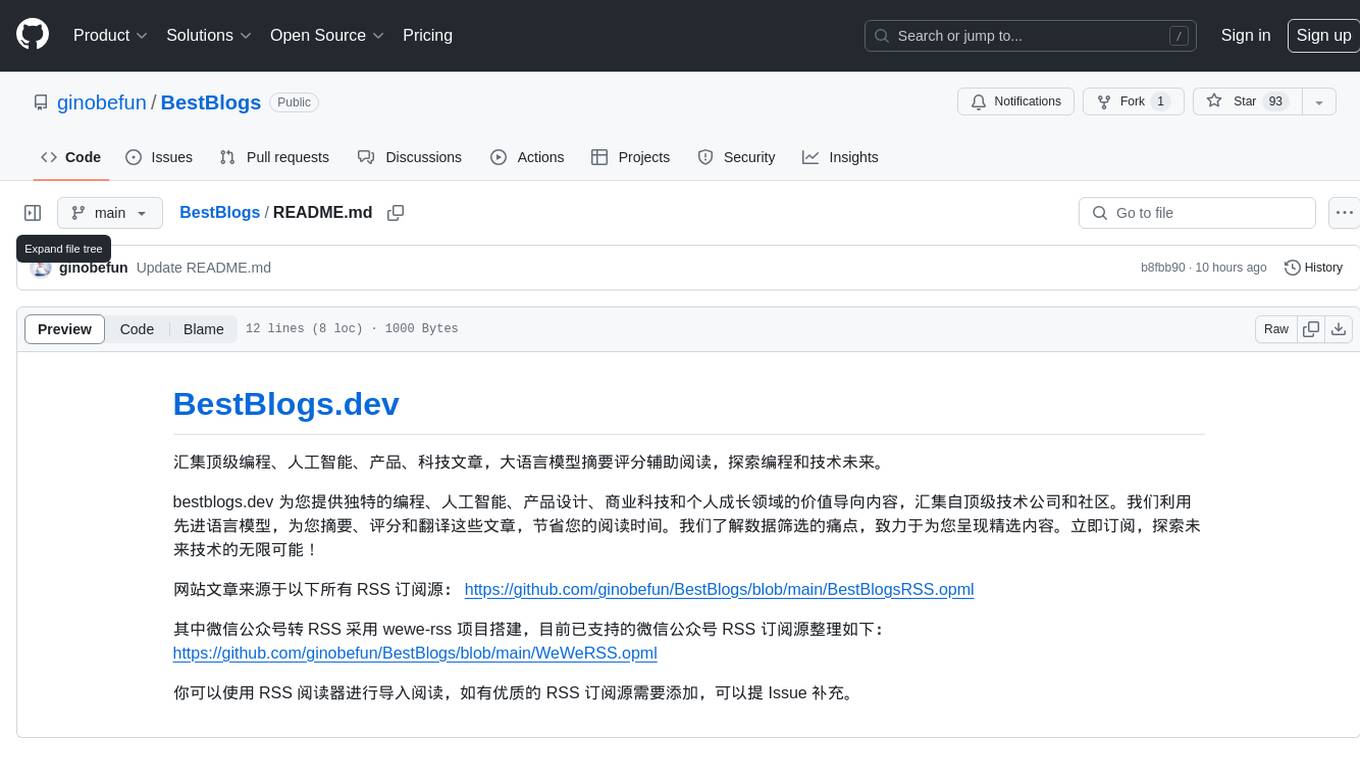
BestBlogs.dev is a platform that curates top programming, artificial intelligence, product, and technology articles. It utilizes advanced language models to summarize, rate, and translate these articles, saving users reading time. The platform focuses on providing high-quality content in the fields of programming, AI, product design, business technology, and personal growth from leading tech companies and communities. Users can explore the future of technology through the platform's value-driven content. The website aggregates articles from various RSS feed sources and supports importing them into RSS readers. Users can contribute by suggesting high-quality RSS feed sources for addition.
README:
汇集顶级编程、人工智能、产品、科技文章,大语言模型摘要评分辅助阅读,探索编程和技术未来。
bestblogs.dev 为您提供独特的编程、人工智能、产品设计、商业科技和个人成长领域的价值导向内容,汇集自顶级技术公司和社区。我们利用先进语言模型,为您摘要、评分和翻译这些文章,节省您的阅读时间。我们了解数据筛选的痛点,致力于为您呈现精选内容。立即订阅,探索未来技术的无限可能!
网站订阅地址:https://www.bestblogs.dev/#subscribe
每周五将推送本周最新的精选推送,让您第一时间了解最新人工智能开发技术和动态。
网站文章来源于以下所有 RSS 订阅源(160个):
https://github.com/ginobefun/BestBlogs/blob/main/BestBlogsRSS.opml
其中微信公众号转 RSS 采用 wewe-rss 项目搭建,目前已支持的微信公众号 RSS 订阅源(160个)整理如下:
https://github.com/ginobefun/BestBlogs/blob/main/WeWeRSS.opml
你可以在网页 https://www.bestblogs.dev/sources 上浏览所有 RSS 订阅源信息,包括订阅源最近 3 个月的文章数量、精选文章数量和阅读数。
你可以使用 RSS 阅读器进行导入阅读,如有优质的 RSS 订阅源需要添加,可以提 Issue 补充。
BestBlogs.dev 提供了灵活的 RSS 订阅功能,让您可以根据自己的需求订阅感兴趣的技术文章。
- 全站订阅:https://www.bestblogs.dev/zh/feeds/rss
- 精选文章订阅:https://www.bestblogs.dev/zh/feeds/rss?featured=y
- 编程技术类文章订阅:https://www.bestblogs.dev/zh/feeds/rss?category=programming
- 人工智能高分文章订阅:https://www.bestblogs.dev/en/feeds/rss?category=ai&minScore=90
参数说明及更多用法请参考 BestBlogs.dev RSS 订阅指南
BestBlogs.dev 基于 Dify Workflow 的文章智能分析实践
- 文章爬取流程:基于 RSS 协议,爬取所有订阅源的文章信息,包括标题、链接、发布时间等,通过链接和无头浏览器爬取文章内容。通过订阅源上定义的文章正文选择器等提取正文,并对正文的 HTML、图片等进行处理,放入待处理文章列表。
- 文章初评流程:通过语言、文章内容等特征,对文章进行初次评分,剔除低质量文章,减少后续步骤处理。使用 Dify Workflow 项目进行文章初评,详细说明参见 BestBlogs 文章初评流程
- 文章分析流程:通过大语言模型(如 GPT-4o)对文章进行摘要、分类和评分,生成一句话总结、文章摘要、主要观点、文章金句、所属领域、标签列表和评分等,便于读者快速过滤筛选及了解全文主要内容,判断是否继续阅读。使用 Dify Workflow 项目进行文章分析,包括 分段分析 - 汇总分析 - 领域划分和标签生成 - 文章评分 - 检查反思 - 优化改进 等环节,详细说明参见 BestBlogs 文章分析流程
- 文章分析结果翻译流程:通过大语言模型(如 GPT-4o)对文章分析结果进行翻译,目前网站支持中英两种语言,根据原文的语言生成目标语言的摘要、主要观点、文章金句、标签列表等。使用 Dify Workflow 项目进行文章分析结果翻译,包括 识别专业术语 - 初次翻译 - 检查翻译 - 意译 等环节,详细说明参见 BestBlogs 文章分析结果翻译流程
For Tasks:
Click tags to check more tools for each tasksFor Jobs:
Alternative AI tools for BestBlogs
Similar Open Source Tools

BestBlogs
BestBlogs.dev is a platform that curates top programming, artificial intelligence, product, and technology articles. It utilizes advanced language models to summarize, rate, and translate these articles, saving users reading time. The platform focuses on providing high-quality content in the fields of programming, AI, product design, business technology, and personal growth from leading tech companies and communities. Users can explore the future of technology through the platform's value-driven content. The website aggregates articles from various RSS feed sources and supports importing them into RSS readers. Users can contribute by suggesting high-quality RSS feed sources for addition.
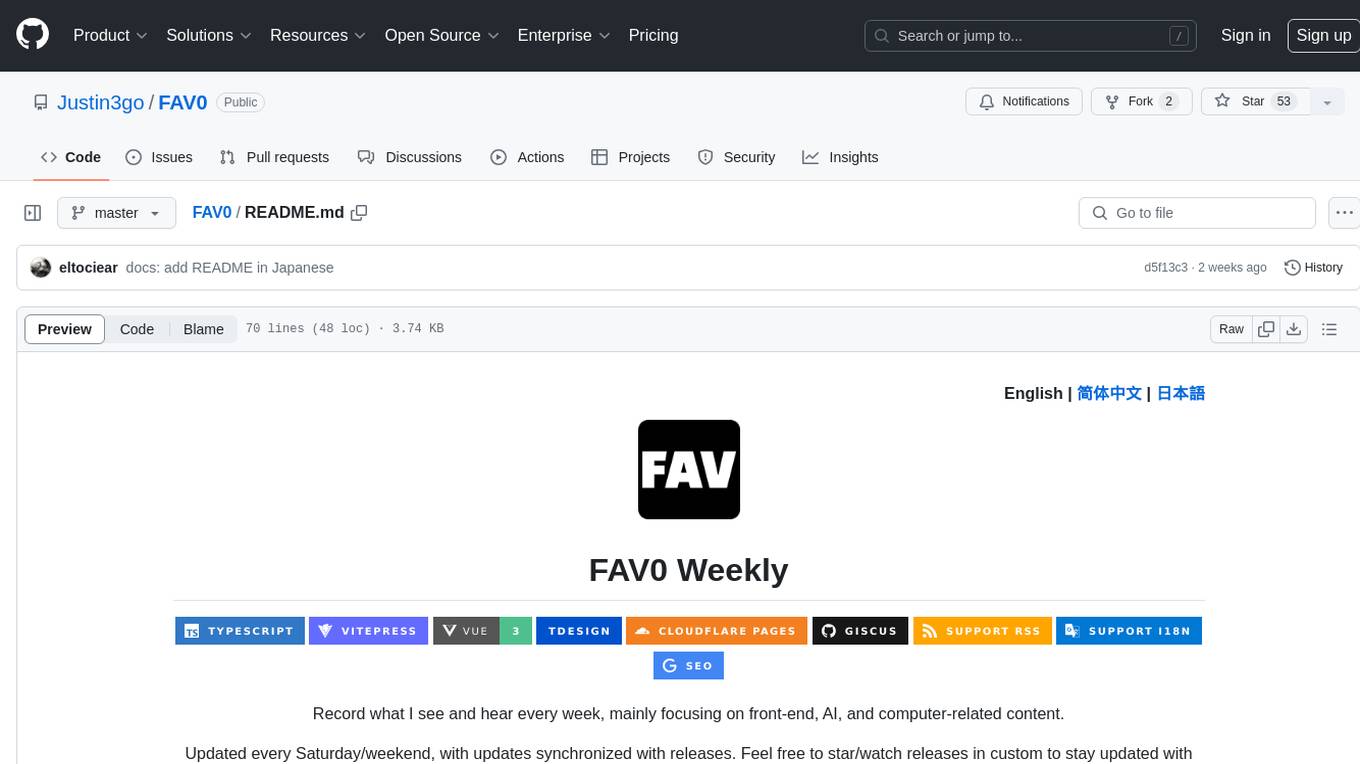
FAV0
FAV0 Weekly is a repository that records weekly updates on front-end, AI, and computer-related content. It provides light and dark mode switching, bilingual interface, RSS subscription function, Giscus comment system, high-definition image preview, font settings customization, and SEO optimization. Users can stay updated with the latest weekly releases by starring/watching the repository. The repository is dual-licensed under the MIT License and CC-BY-4.0 License.
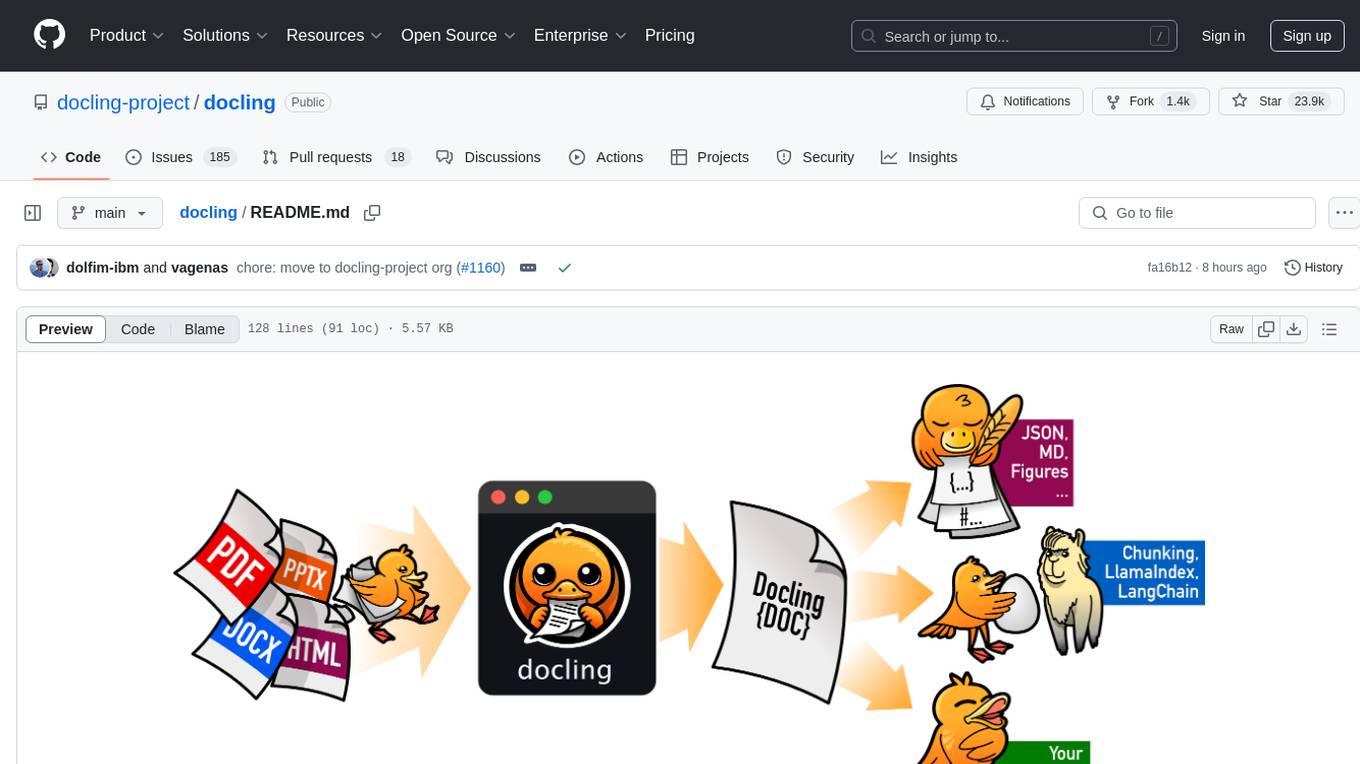
docling
Docling simplifies document processing, parsing diverse formats including advanced PDF understanding, and providing seamless integrations with the general AI ecosystem. It offers features such as parsing multiple document formats, advanced PDF understanding, unified DoclingDocument representation format, various export formats, local execution capabilities, plug-and-play integrations with agentic AI tools, extensive OCR support, and a simple CLI. Coming soon features include metadata extraction, visual language models, chart understanding, and complex chemistry understanding. Docling is installed via pip and works on macOS, Linux, and Windows environments. It provides detailed documentation, examples, integrations with popular frameworks, and support through the discussion section. The codebase is under the MIT license and has been developed by IBM.
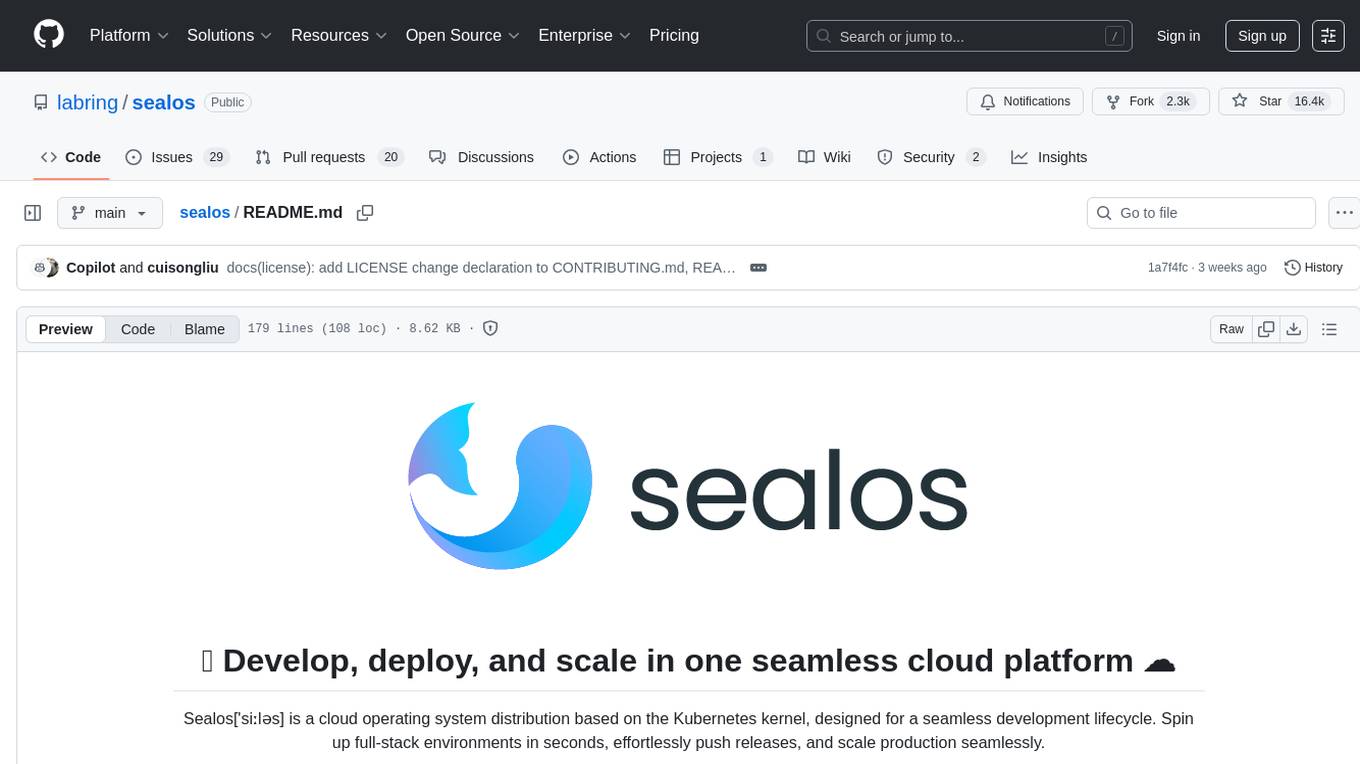
sealos
Sealos is a cloud operating system distribution based on the Kubernetes kernel, designed for a seamless development lifecycle. It allows users to spin up full-stack environments in seconds, effortlessly push releases, and scale production seamlessly. With core features like easy application management, quick database creation, and cloud universality, Sealos offers efficient and economical cloud management with high universality and ease of use. The platform also emphasizes agility and security through its multi-tenancy sharing model. Sealos is supported by a community offering full documentation, Discord support, and active development roadmap.
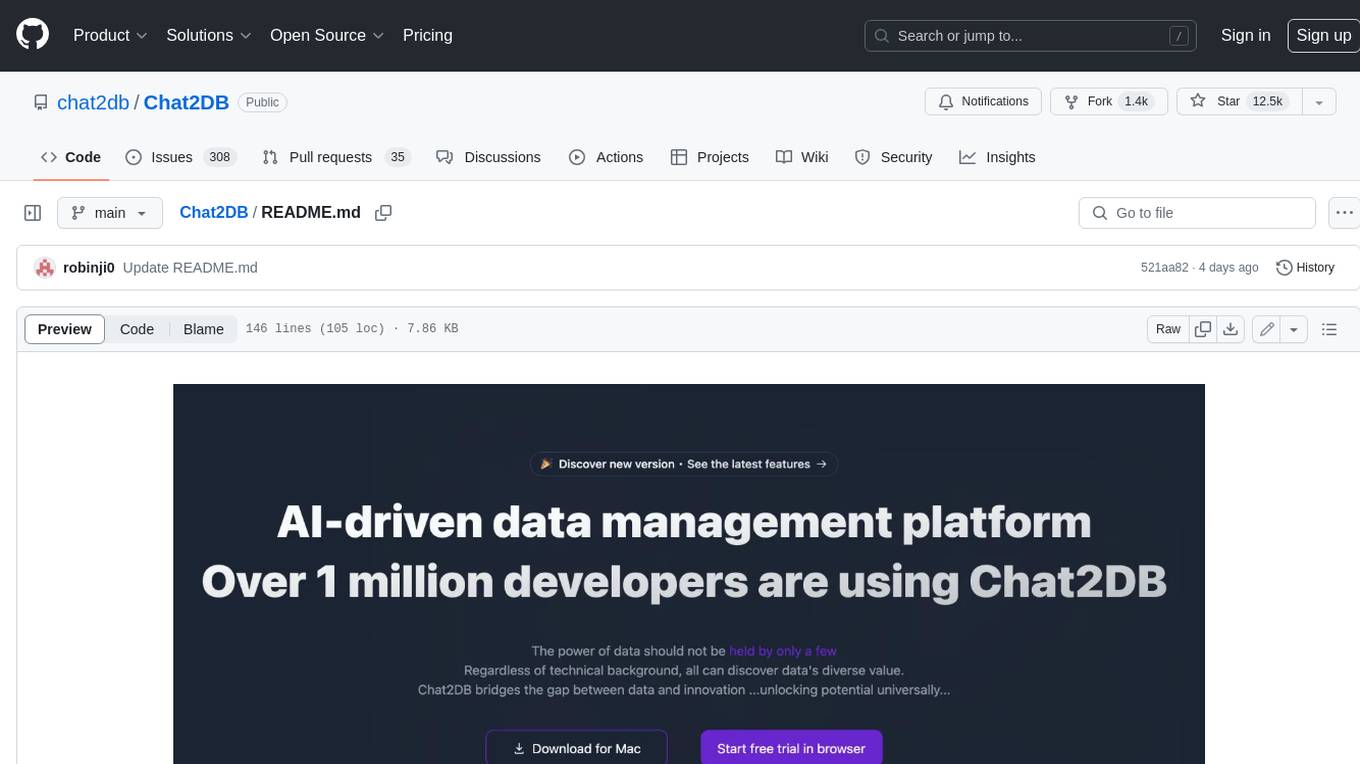
Chat2DB
Chat2DB is an AI-driven data development and analysis platform that enables users to communicate with databases using natural language. It supports a wide range of databases, including MySQL, PostgreSQL, Oracle, SQLServer, SQLite, MariaDB, ClickHouse, DM, Presto, DB2, OceanBase, Hive, KingBase, MongoDB, Redis, and Snowflake. Chat2DB provides a user-friendly interface that allows users to query databases, generate reports, and explore data using natural language commands. It also offers a variety of features to help users improve their productivity, such as auto-completion, syntax highlighting, and error checking.
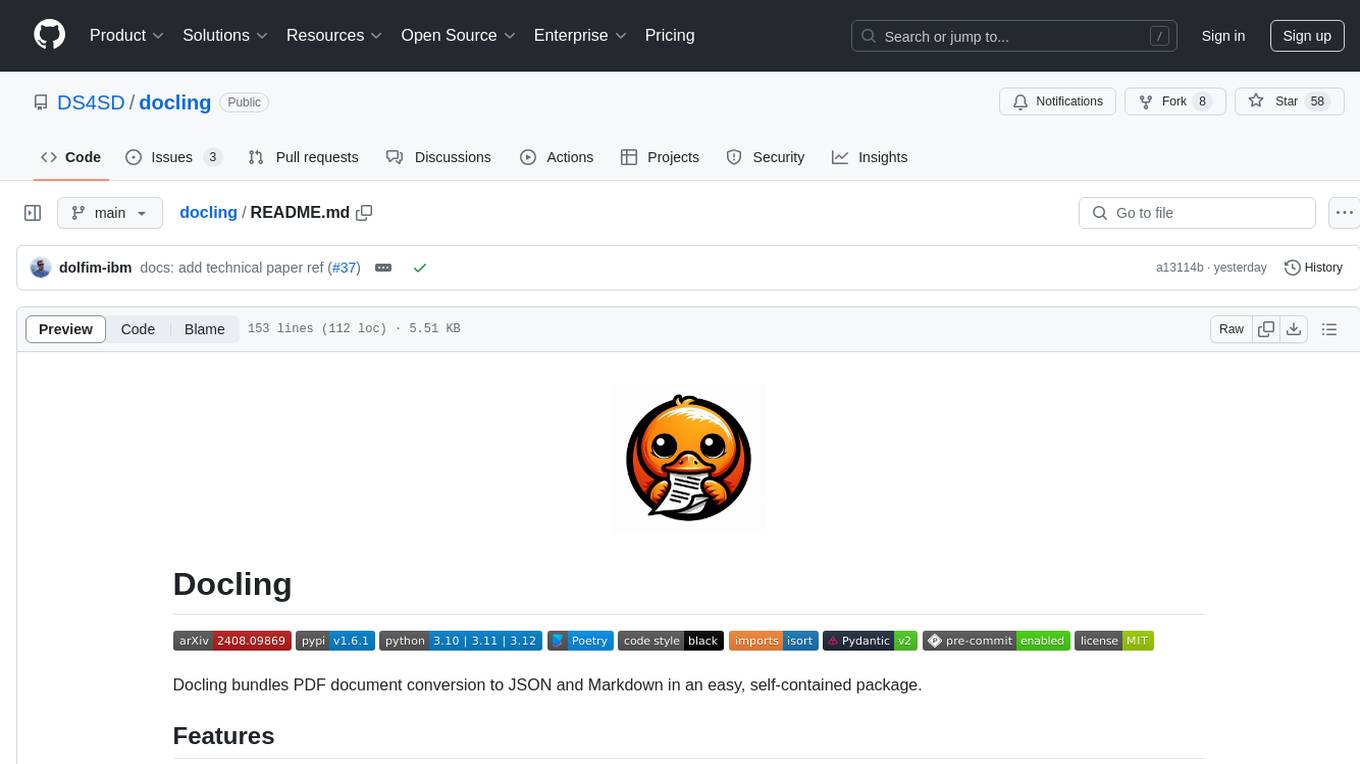
docling
Docling is a tool that bundles PDF document conversion to JSON and Markdown in an easy, self-contained package. It can convert any PDF document to JSON or Markdown format, understand detailed page layout, reading order, recover table structures, extract metadata such as title, authors, references, and language, and optionally apply OCR for scanned PDFs. The tool is designed to be stable, lightning fast, and suitable for macOS and Linux environments.
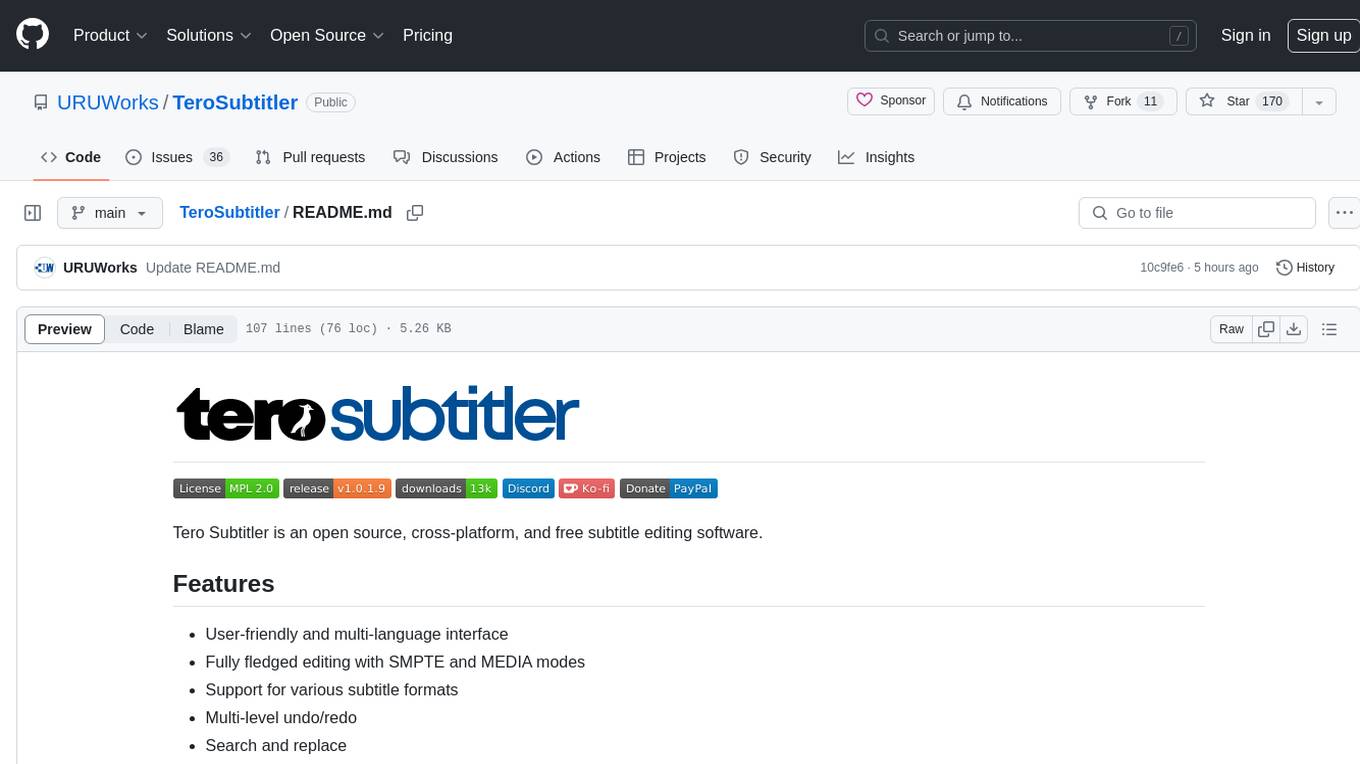
TeroSubtitler
Tero Subtitler is an open source, cross-platform, and free subtitle editing software with a user-friendly interface. It offers fully fledged editing with SMPTE and MEDIA modes, support for various subtitle formats, multi-level undo/redo, search and replace, auto-backup, source and transcription modes, translation memory, audiovisual preview, timeline with waveform visualizer, manipulation tools, formatting options, quality control features, translation and transcription capabilities, validation tools, automation for correcting errors, and more. It also includes features like exporting subtitles to MP3, importing/exporting Blu-ray SUP format, generating blank video, generating video with hardcoded subtitles, video dubbing, and more. The tool utilizes powerful multimedia playback engines like mpv, advanced audio/video manipulation tools like FFmpeg, tools for automatic transcription like whisper.cpp/Faster-Whisper, auto-translation API like Google Translate, and ElevenLabs TTS for video dubbing.
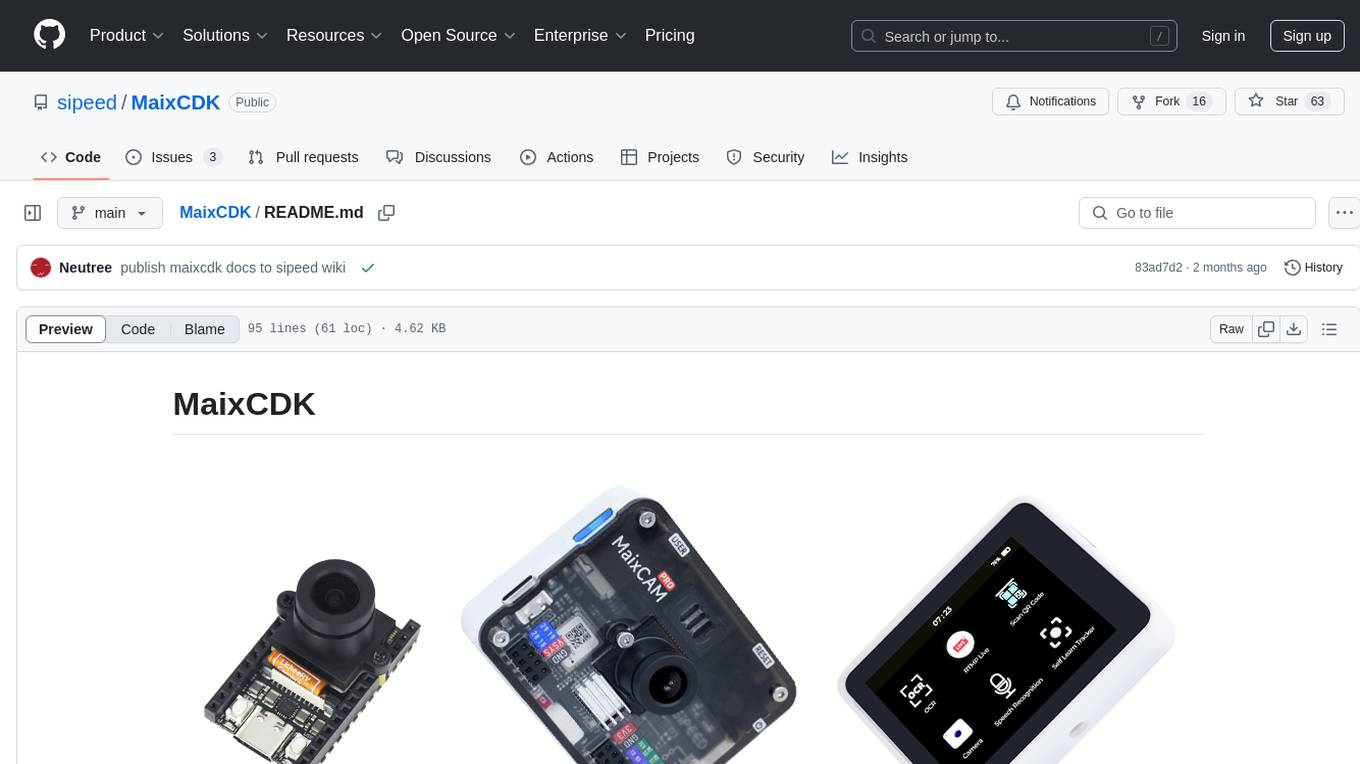
MaixCDK
MaixCDK (Maix C/CPP Development Kit) is a C/C++ development kit that integrates practical functions such as AI, machine vision, and IoT. It provides easy-to-use encapsulation for quickly building projects in vision, artificial intelligence, IoT, robotics, industrial cameras, and more. It supports hardware-accelerated execution of AI models, common vision algorithms, OpenCV, and interfaces for peripheral operations. MaixCDK offers cross-platform support, easy-to-use API, simple environment setup, online debugging, and a complete ecosystem including MaixPy and MaixVision. Supported devices include Sipeed MaixCAM, Sipeed MaixCAM-Pro, and partial support for Common Linux.

xpander.ai
xpander.ai is a Backend-as-a-Service for autonomous agents that abstracts the ops layer, allowing AI engineers to focus on behavior and outcomes. It provides managed agent hosting with version control and CI/CD, a fully managed PostgreSQL memory layer, and a library of 2,000+ functions. The platform features an AI native triggering system that processes inputs from various sources and delivers unified messages to agents. With support for any agent framework or SDK, including Agno and OpenAI, xpander.ai enables users to build intelligent, production-ready AI agents without dealing with infrastructure complexity.
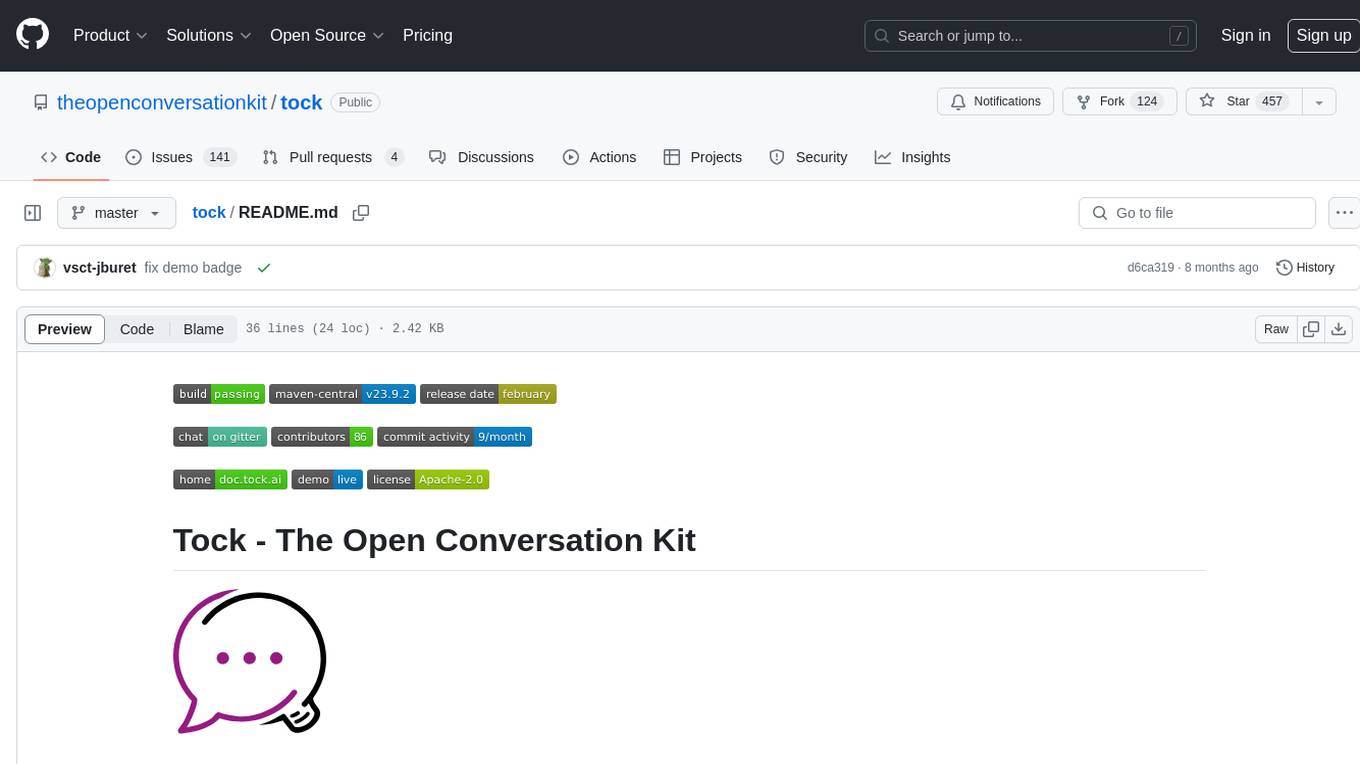
tock
Tock is an open conversational AI platform for building bots. It offers a natural language processing open source stack compatible with various tools, a user interface for building stories and analytics, a conversational DSL for different programming languages, built-in connectors for text/voice channels, toolkits for custom web/mobile integration, and the ability to deploy anywhere in the cloud or on-premise with Docker.
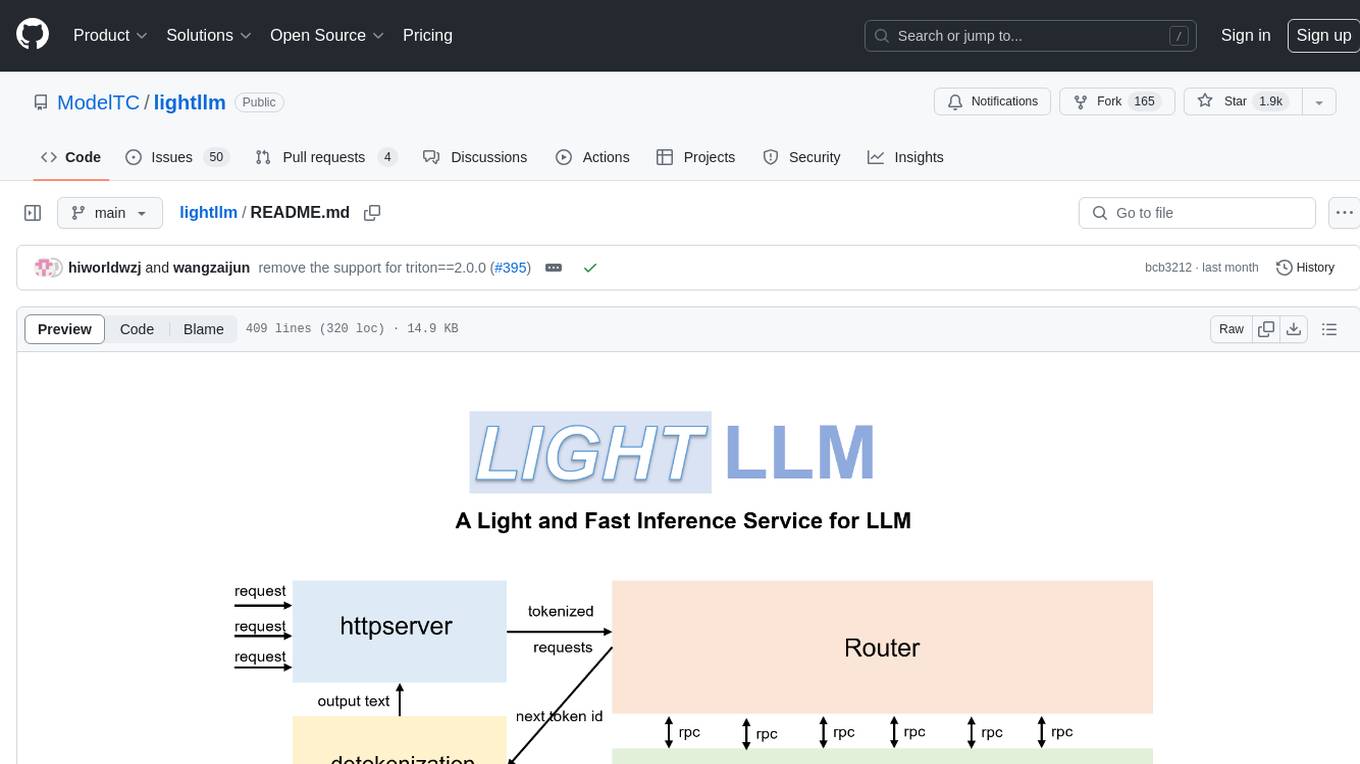
lightllm
LightLLM is a Python-based LLM (Large Language Model) inference and serving framework known for its lightweight design, scalability, and high-speed performance. It offers features like tri-process asynchronous collaboration, Nopad for efficient attention operations, dynamic batch scheduling, FlashAttention integration, tensor parallelism, Token Attention for zero memory waste, and Int8KV Cache. The tool supports various models like BLOOM, LLaMA, StarCoder, Qwen-7b, ChatGLM2-6b, Baichuan-7b, Baichuan2-7b, Baichuan2-13b, InternLM-7b, Yi-34b, Qwen-VL, Llava-7b, Mixtral, Stablelm, and MiniCPM. Users can deploy and query models using the provided server launch commands and interact with multimodal models like QWen-VL and Llava using specific queries and images.
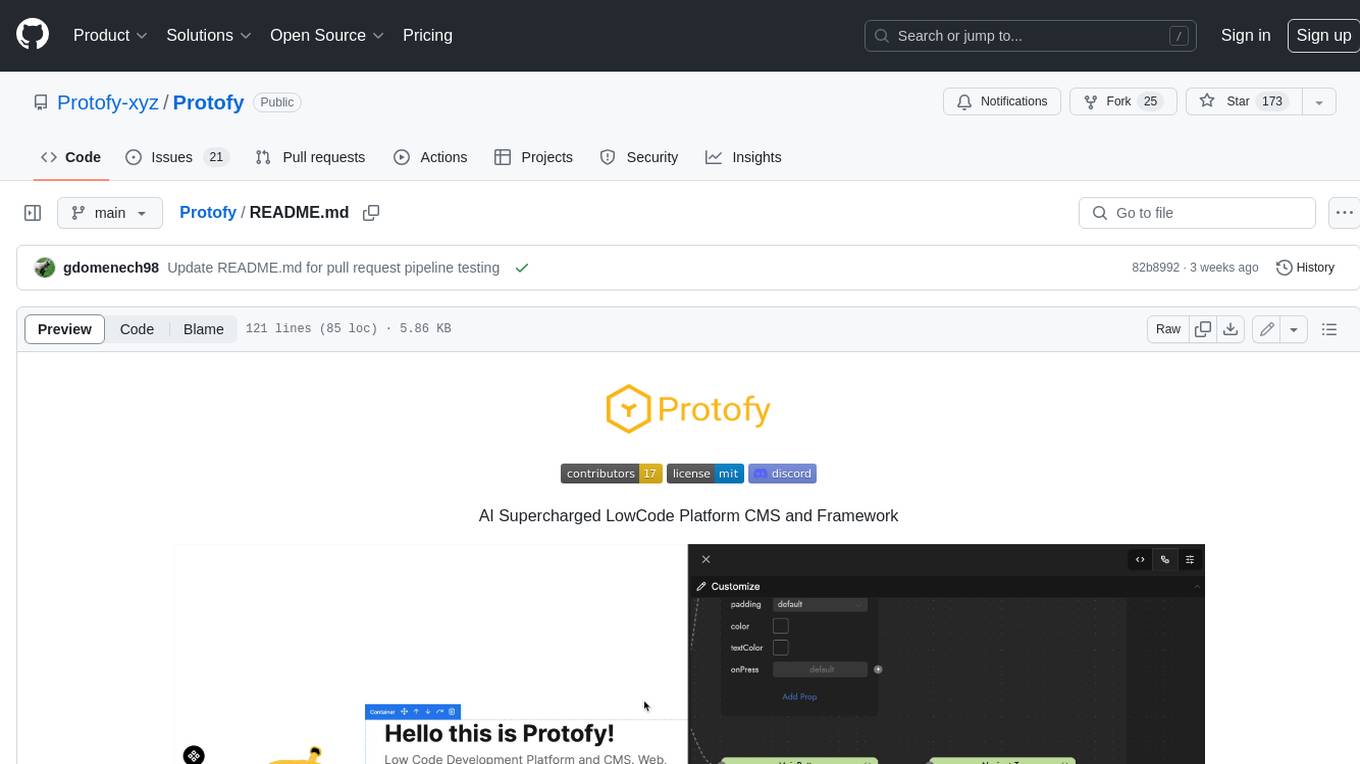
Protofy
Protofy is a full-stack, batteries-included low-code enabled web/app and IoT system with an API system and real-time messaging. It is based on Protofy (protoflow + visualui + protolib + protodevices) + Expo + Next.js + Tamagui + Solito + Express + Aedes + Redbird + Many other amazing packages. Protofy can be used to fast prototype Apps, webs, IoT systems, automations, or APIs. It is a ultra-extensible CMS with supercharged capabilities, mobile support, and IoT support (esp32 thanks to esphome).
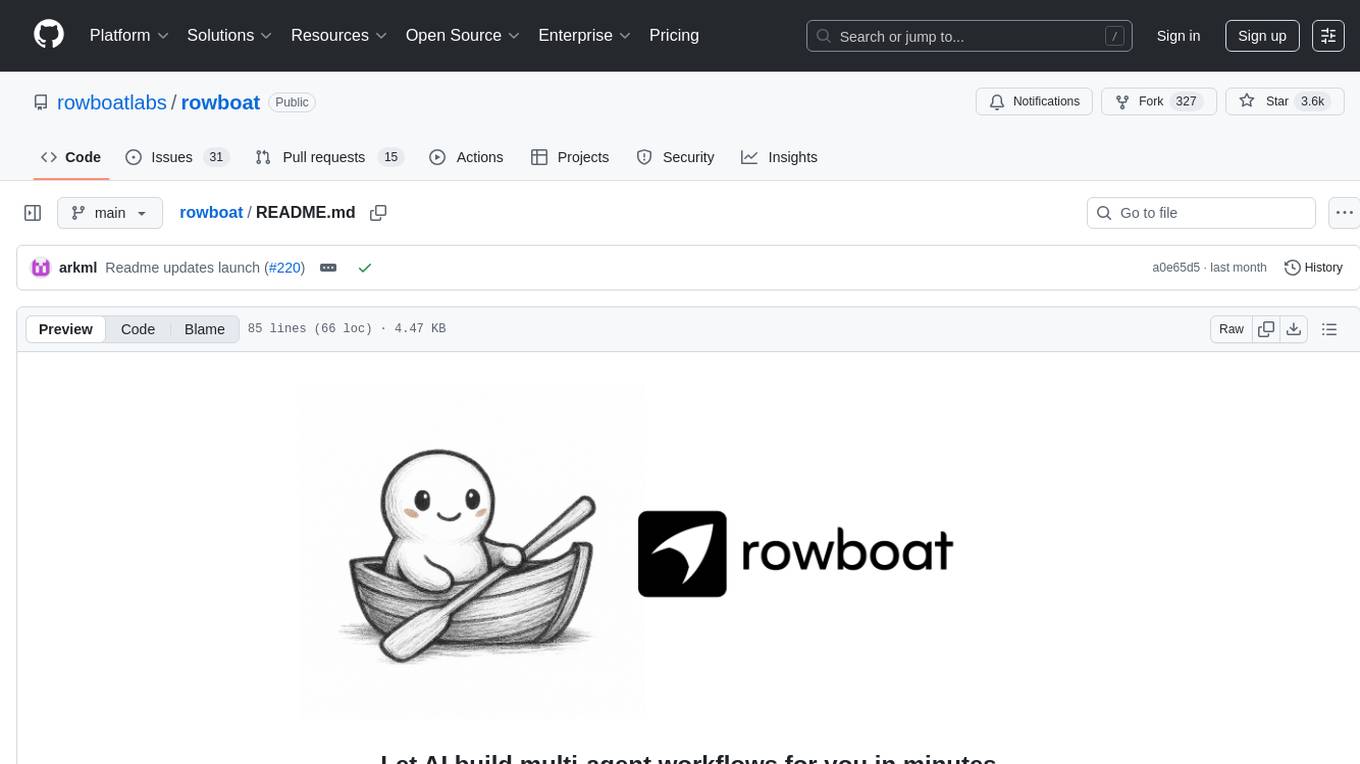
rowboat
Rowboat is a tool that allows users to build AI agents instantly with natural language, connect tools with one-click integrations, power workflows with knowledge by adding documents for RAG, automate workflows by setting up triggers and actions, and deploy anywhere via API or SDK. Users can access a hosted version to start building agents right away. The tool provides features such as native RAG support, custom LLM providers, tools & triggers for automation, and API & SDK integration. Users can refer to the documentation to learn how to start building agents with Rowboat.
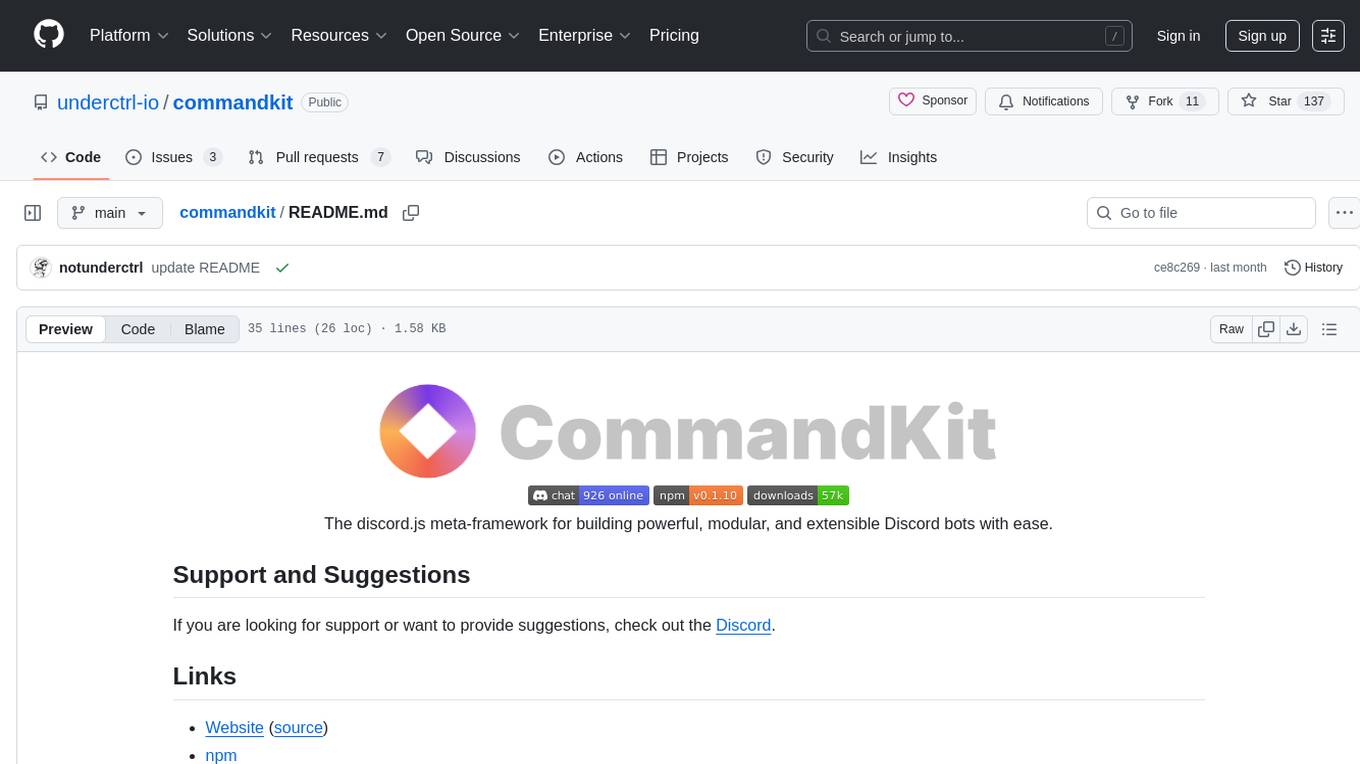
commandkit
Commandkit is a discord.js meta-framework designed for building powerful, modular, and extensible Discord bots with ease. It provides a range of packages for various functionalities such as AI, caching, devtools, i18n, legacy support, queuing, Redis integration, and task management. The framework aims to simplify the process of creating and managing Discord bots by offering a structured and versatile solution.
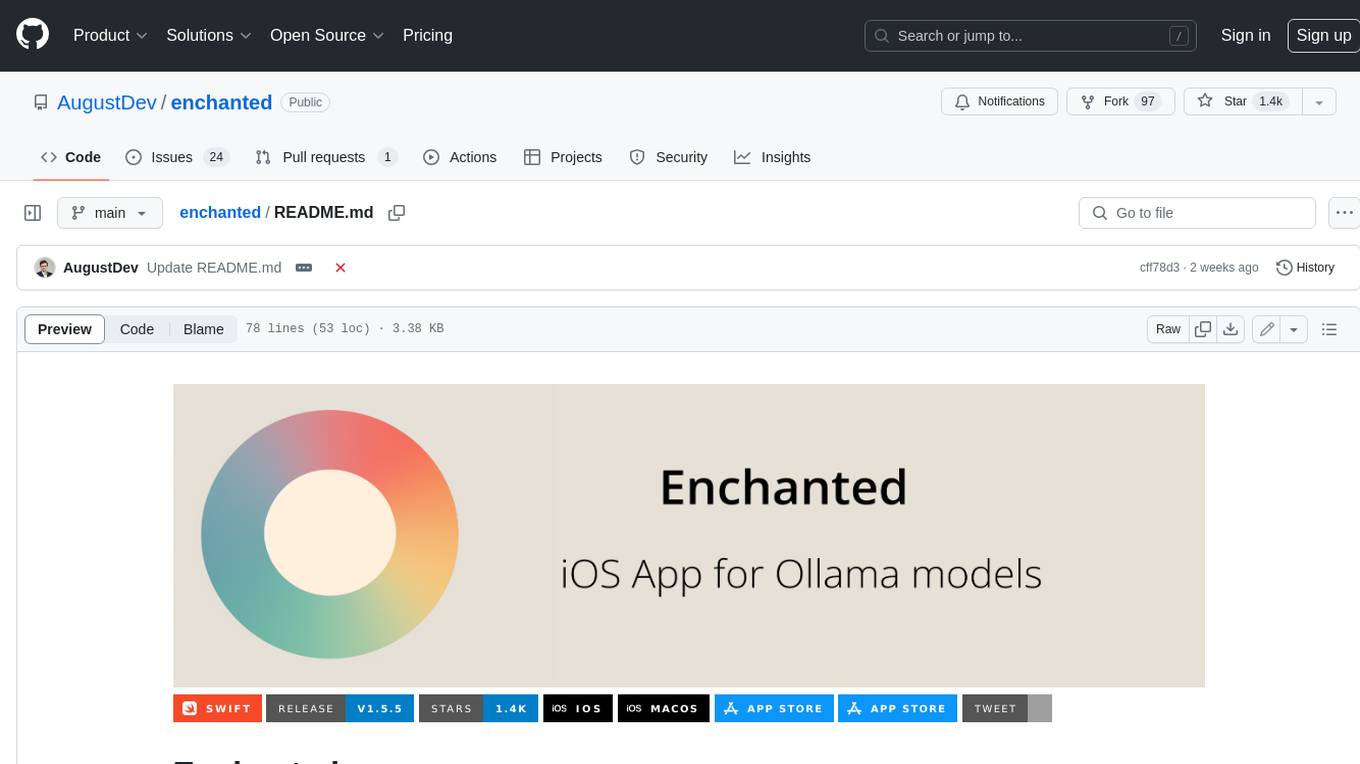
enchanted
Enchanted is an open-source, Ollama-compatible app for macOS and iOS that allows users to work with privately hosted models such as Llama 2, Mistral, Vicuna, Starling, and more. It provides a user-friendly interface for interacting with these models, making it easy to generate text, translate languages, write different kinds of creative content, and more. The app is designed to be secure and private, ensuring that user data is protected. It also offers a range of features such as dark/light mode, conversation history, markdown support, voice prompts, and image attachments.
For similar tasks

BestBlogs
BestBlogs.dev is a platform that curates top programming, artificial intelligence, product, and technology articles. It utilizes advanced language models to summarize, rate, and translate these articles, saving users reading time. The platform focuses on providing high-quality content in the fields of programming, AI, product design, business technology, and personal growth from leading tech companies and communities. Users can explore the future of technology through the platform's value-driven content. The website aggregates articles from various RSS feed sources and supports importing them into RSS readers. Users can contribute by suggesting high-quality RSS feed sources for addition.
For similar jobs

weave
Weave is a toolkit for developing Generative AI applications, built by Weights & Biases. With Weave, you can log and debug language model inputs, outputs, and traces; build rigorous, apples-to-apples evaluations for language model use cases; and organize all the information generated across the LLM workflow, from experimentation to evaluations to production. Weave aims to bring rigor, best-practices, and composability to the inherently experimental process of developing Generative AI software, without introducing cognitive overhead.

LLMStack
LLMStack is a no-code platform for building generative AI agents, workflows, and chatbots. It allows users to connect their own data, internal tools, and GPT-powered models without any coding experience. LLMStack can be deployed to the cloud or on-premise and can be accessed via HTTP API or triggered from Slack or Discord.

VisionCraft
The VisionCraft API is a free API for using over 100 different AI models. From images to sound.

kaito
Kaito is an operator that automates the AI/ML inference model deployment in a Kubernetes cluster. It manages large model files using container images, avoids tuning deployment parameters to fit GPU hardware by providing preset configurations, auto-provisions GPU nodes based on model requirements, and hosts large model images in the public Microsoft Container Registry (MCR) if the license allows. Using Kaito, the workflow of onboarding large AI inference models in Kubernetes is largely simplified.

PyRIT
PyRIT is an open access automation framework designed to empower security professionals and ML engineers to red team foundation models and their applications. It automates AI Red Teaming tasks to allow operators to focus on more complicated and time-consuming tasks and can also identify security harms such as misuse (e.g., malware generation, jailbreaking), and privacy harms (e.g., identity theft). The goal is to allow researchers to have a baseline of how well their model and entire inference pipeline is doing against different harm categories and to be able to compare that baseline to future iterations of their model. This allows them to have empirical data on how well their model is doing today, and detect any degradation of performance based on future improvements.

tabby
Tabby is a self-hosted AI coding assistant, offering an open-source and on-premises alternative to GitHub Copilot. It boasts several key features: * Self-contained, with no need for a DBMS or cloud service. * OpenAPI interface, easy to integrate with existing infrastructure (e.g Cloud IDE). * Supports consumer-grade GPUs.

spear
SPEAR (Simulator for Photorealistic Embodied AI Research) is a powerful tool for training embodied agents. It features 300 unique virtual indoor environments with 2,566 unique rooms and 17,234 unique objects that can be manipulated individually. Each environment is designed by a professional artist and features detailed geometry, photorealistic materials, and a unique floor plan and object layout. SPEAR is implemented as Unreal Engine assets and provides an OpenAI Gym interface for interacting with the environments via Python.

Magick
Magick is a groundbreaking visual AIDE (Artificial Intelligence Development Environment) for no-code data pipelines and multimodal agents. Magick can connect to other services and comes with nodes and templates well-suited for intelligent agents, chatbots, complex reasoning systems and realistic characters.




